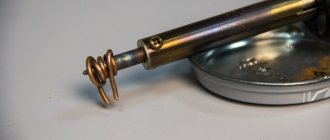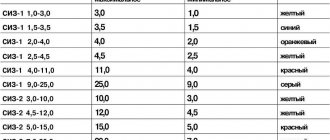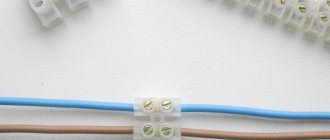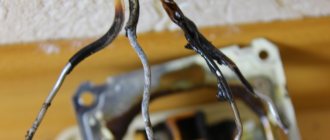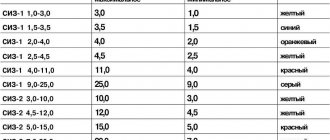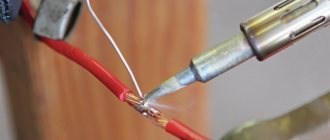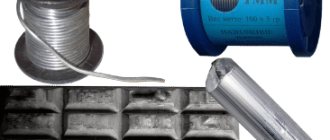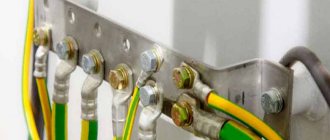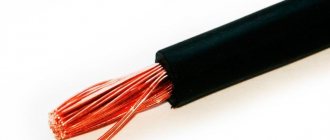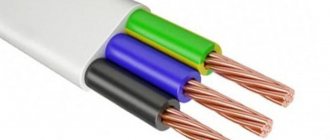What you need to know about flux
Flux is a substance that facilitates the soldering process. It removes oxides before soldering parts and during tinning. Due to high soldering temperatures, the oxidation reaction will accelerate and the oxide layer will appear faster on the soldered surfaces. Flux reduces this process and also wets the surface, which creates a “surface tension” effect and the solder is easier to distribute.
The choice of a soldering station, as well as the search for the necessary flux for the job, directly depends on what specific goal you are pursuing.
For example, low-budget materials are suitable for amateur radio. But for repairs it is necessary to use no-clean substances, especially when it comes to BGA soldering.
Main functions and properties
Before soldering, oxides are present on the contacts. Since the contacts are made of metal, they oxidize in the surrounding air. This chemical process occurs continuously if the metal surface is not protected from air by any layer of varnish or other insulator.
In order to reliably and efficiently solder the contacts to each other, they must first be tinned with solder. From this stage one of the main and key functions of the flux begins.
Main functions of flux:
- quick removal of oxides from contacts during soldering;
- creating surface tension when applying solder to soldering surfaces;
- additional protection of the soldered contact area from the environment (air or moisture, anti-corrosion).
Why is the correct choice of soldering flux so important? When choosing a flux, its parameters and declared properties play an important role.
Parameters and properties:
- residual effects (need to wash off flux residues or not);
- resistance (Ohm);
- working temperature;
- form of the substance (paste, liquid or solid);
- emissions during operation;
- price.
As we can see, there are a lot of these factors. For example, the shape of the flux plays an important role in the job being performed. Liquid rosin is much more practical than solid rosin if you need to solder several dozen wires. But paste-like flux wins over everyone when doing delicate work. It doesn't spread much and is easy to dose. However, you should not use such a flux for soldering wires; it is not economically profitable.
Requirements for fluxes
Since fluxes have different chemical compositions and purposes, the requirements for them may be different. For example, acid is absolutely not acceptable for no-clean fluxes. In some electronics industries, such as security systems, medical and military equipment, the main parameters are their resistance to various external factors during operation. And the quality of soldering is one of the factors of device reliability. Especially when it comes to SMD components and BGA chips.
Soldering technology
The basis of any soldering is high-quality heating of the parts being soldered and then securing them with solder. two types of soldering can be distinguished : using flux or using rosin.
Soldering with rosin
Learning to solder with a soldering iron with rosin is more difficult, but once you master this skill, it will be possible to complete 90 percent of the work.
Let's look at the example of soldering wires to a board. First you need to warm up the wire; to do this, apply the tip of a heated soldering iron flat (it’s better if it’s a tip in the shape of a screwdriver), pressing as much as possible. After a few seconds, the wire with the tip pressed to it is lowered into rosin, which, when boiling, is evenly distributed over all the wire cores. This way the wire is prepared for applying solder. Using a soldering iron tip, take a small part of the solder and apply a thin layer of it to the wire. In this case, you should not get any drops or unaffected areas; ideally, you get the same wire, but in tin.
We clean the soldering iron tip with a metal sponge or cloth and, touching the rosin with the tip, run the tip over the board, leaving a thin layer of rosin on the surface. The surfaces are prepared. Ensuring maximum contact between the wire and the board, we press the tip with a thin layer of solder onto the wire and “stroke” the soldering area several times with a soldering iron for better heating. After this, let it cool and check the contact for strength.
If soldering is carried out correctly, the surface is shiny and the connection has maximum strength. If the surface looks dull and loose, it means that the rules for soldering with a soldering iron were violated and the connection is not so strong. But in some cases, this result is satisfactory.
Soldering with flux
To solder with flux, you just need to take the flux, dip a brush into it and apply it to the surface to be soldered. After this, you can apply solder or solder directly. Despite its apparent simplicity, working with acid has many nuances :
- Each material has its own flux and they are not interchangeable, and in some cases even give the opposite effect;
- You cannot use fluxes that are too active on microcircuits, as they can burn through the metal of the track;
- If you do not remove the flux from the surface after work or do it with the wrong reagent, it will continue to destroy the metal;
- The copper tip of a soldering iron, especially if it is sharpened, is destroyed by acid, and you have to constantly sharpen it.
In addition to knowledge, working with a soldering iron requires accuracy and precision, and having learned how to solder simple parts, it will not be difficult to move on to soldering thinner circuit boards, or, conversely, thick wires, various elements, rhinestones, and subsequently even solder plates together.
Classification by type
Since the scope of application of soldering flux is quite large, they differ in their composition. Both the price and emissions during soldering depend on the chemical composition.
Active
Active fluxes include those fluxes that contain acid. The acid perfectly removes oxides and is very convenient for soldering and tinning various metal contacts. When soldering with acid, it is necessary to create the most ventilated conditions because During the evaporation process, toxic waste is released, and it primarily affects not only the respiratory system, but also the mucous membranes. In addition, you need to be very careful when applying acid to the soldering area and not allow it to come into contact with the skin or mucous membranes. 100% need to clean the soldering area. The acid reacts with the soldering joint at room temperature. Therefore, after a short period of time, microcracks will form at the soldering site, which will then oxidize. At the same time, the contact resistance will increase, and eventually complete destruction of the soldering will occur. In addition, acid is a very good conductor (since it contains water). If you do not remove it between the row between two tracks, this is a guaranteed short circuit.
In most cases of repair and amateur radio practice, the use of soldering acid is not justified. Many radio amateurs teach beginners how to solder with acid, and this is a fatal mistake. Yes, it is easier to solder with it, but this is a last resort. Soldering acid should only be used as a last resort. These include strong oxides (consequences of moisture, and by the way, in this case you can use activated flux) or soldering of different metals.
Acid fluxes are not recommended to be applied to the board with metal tools because they can become damaged over time due to acid action. The same applies to the soldering iron tip. Excessive acid soldering can damage the soldering iron tip.
Acid-free
Acid-free fluxes include neutral fluxes. Such substances do not react with the soldering site immediately upon application. They do not corrode soldered joints. In terms of price, these are the most affordable substances.
Anti-corrosion
Reduce possible corrosion of metals after soldering.
Protective fluxes
This type of flux allows you to protect the board from the environment and prevents oxidation of the contacts during operation of the electronic device.
Activated
This type includes substances that clean the solder joint. They do not require rinsing, but it is advisable to remove their remains after soldering.
Soldering with a soldering iron
In order to start soldering, you need to prepare a workplace and the necessary tools. Regardless of the type of proposed work, the following requirements are imposed on the workplace:
- The presence of good lighting will allow you not only to work comfortably, but also to notice small flaws in the soldered parts, which is difficult if there is a lack of light;
- No flammable items;
- Free working space on which you can easily place the part to be soldered;
- The presence of ventilation will make work not only more comfortable, but also safer; inhaling molten rosin has a negative effect on the respiratory system;
- A magnifying glass makes it possible to work even with small parts and thin wires;
- A simple stand solves the problem of placing a heated soldering iron.
The next stage of preparation will be the choice of tool, and a beginner is always faced with the question of what is needed for soldering with a soldering iron.
Soldering iron selection
The basis of high-quality soldering is heating metal parts to the soldering temperature; accordingly, for each type of work it is recommended to use soldering irons of different capacities:
- For soldering radio components and microcircuits, it is best to use a soldering iron with a power of no more than 60 Watts, otherwise you can overheat the part or simply melt it;
- Parts up to 1 mm thick will warm up better when using a tool with a power of 80-100 Watts;
- Parts with a wall thickness of up to 2 mm require greater power and some experience in operation, so soldering of such parts will not be considered in this article.
After choosing the power of the soldering iron, you should prepare it for work, or rather, prepare the tip . There are soldering irons with replaceable tips that are suitable for different types of work. Models with a copper tip are also available, which can be sharpened or given any desired shape using a hammer. A serious disadvantage of such tips is the need to constantly tin them so that an oxide film does not appear on the surface, which prevents the solder from sticking. Manufacturers also produce a more expensive version with a nickel-plated coating, but it is afraid of overheating and requires careful handling.
What else do you need for soldering?
In addition to the soldering iron itself, you need the following for soldering:
- solder;
- rosin;
- soldering acids or fluxes.
Solder is the connecting material between the parts being soldered, and without it there is no way to work. Now stores sell specially prepared solders in the form of wires of various diameters twisted into a spiral, from which it is convenient to “pinch off” the required piece with a heated tip, but you can also use a piece of tin , but the work will not be so convenient.
Rosin is used to prepare the surface for the application of solder. Solder with rosin is distributed evenly, in the absence of the latter it rolls into drops, and does not stick to some surfaces at all.
Soldering acid, or flux, is necessary to prepare contacts for soldering. A beginner should know that the flux for each material being soldered is different, and you cannot use acid to solder aluminum on a copper wire, otherwise the solder simply won’t stick.
According to condition
Fluxes come in different shapes and conditions. There are solid, liquid and paste-like. In general, they differ almost completely in their parameters and properties.
Liquid
Liquid fluxes already have better properties compared to solid ones. They are much easier to apply and significantly reduce soldering time.
The disadvantage is that it dries quickly in the open air; if such a composition is spilled on the surface, it will be difficult to wipe it off. This type includes, for example, liquid rosin. It is usually sold in jars with a brush.
If you use liquid rosin, do not apply it to a hot surface with a brush. Due to high temperature, the brush may become deformed and cannot be returned to its previous state.
By the way, after purchasing in a store, immediately check that the lid is tightly closed, otherwise it may spill. In stores, sometimes the lids are not closed tightly so that the rosin does not dry to the bottle.
Solid
The hard ones include the most common rosin and solder fat. The advantage of such fluxes is the price. By the way, aspirin tablets are also quite a solid gumboil.
The disadvantage is the inconvenience of application (first on a soldering iron, then on the soldering site, etc.), some types of soldering are not available, poor removal of oxides before and during soldering, extremely low surface tension effect, many marks on the work site and a large amount of fumes when soldering.
Active fat is classified as solid because it cannot be applied with a brush as effectively as liquid rosin. In addition, fat still has a denser structure.
Pasty
Liquid and solid fluxes are not recommended for use in BGA soldering. They boil hot, and there are paste fluxes for surface mounting.
Paste fluxes are the best types available. For example, they are very convenient to apply. They do not dry out in the air, have excellent soldering properties (depending, of course, on the price) and all types of soldering are possible. The only disadvantages include the fact that there are many fakes of famous manufacturers on sale (however, some fakes are close in level to the standard), harmful fumes and, of course, the price.
Fluxes that are too cheap are terribly solderable. Another indisputable advantage of paste is that you can use syringes with thin needles (the sharp tip of the needle must be cut off), thereby very accurately dosing a portion of the flux, and without smearing it all over the board. In addition, they are easy to wash and some of them can not be washed off at all (which are used in BGA soldering, where cleaning is, in principle, very difficult). The best way to apply paste flux is with a syringe. You can accurately and economically dose the flux using a syringe. A simple pharmaceutical syringe is enough, we cut off the sharp part of the needle and you can freely make the length of the dispenser as convenient for you. In addition, a metal needle does not deform from high temperature as much as a brush, and you can safely add flux during the soldering process.
Convenient application of paste-like flux is another plus in the collection of advantages of paste-like substances.
There are also so-called flux guns, but they are much larger and are not very convenient for micro-soldering. And if you do not plan to solder boards on an industrial scale every day, then you do not need flux guns.
You can solder wires, DIP radio components and contacts with paste fluxes, but this is not very economical. If you need to solder a lot of wires, then the most common liquid rosin will do.
By the way, fluxes are found in many solders and soldering pastes.
It is easier and faster to work with such solder.
Rosin
Rosin is made from the resin of coniferous trees and is a solid substance, somewhat reminiscent of amber in color.
For the convenience of users, manufacturers package it in various containers.
May also be sold as a ready-made solder.
It is very convenient to use such solder, since melting solder and flux simultaneously cover the joint of the parts being soldered, reducing the process time.
Rosin is used mainly when soldering electrical products, such as wires, radio components, microcircuits, since it does not oxidize at all over time, which contributes to long-lasting and durable connections.
Is it necessary to clean the boards after soldering from flux residues?
In general, it is advisable to clean the board after soldering, unless we are talking about protective fluxes. If you soldered with acid, then this is absolutely necessary.
Sometimes you even need to clean the soldering area from rosin. And not only for beauty, but also to make sure that there is no excess solder on the contacts, which could cause a short circuit on the board.
Removing residues
For cleaning the board after soldering, products such as Galosh gasoline, isopropyl alcohol, Flux Off and white spirit are excellent.
You can also use medical alcohol or vodka, but of course they clean much worse.
Cleaning can only be done in a ventilated area!
Use a small jar with a small hole (or dispenser) to store gasoline so you don't have to constantly open and close bottles. For example, you can use a hydrogen peroxide bottle.
They also sell these special bottles with different needles. They make it very convenient to dose the cleaning product.
It will be enough to tilt the container and apply a small dose of cleaning agent to the electronic board.
It is convenient to clean the board using cotton swabs, discs or a regular toothbrush.
It is not recommended to clean solder residues with water, even if the manufacturer allows it. A mixture of water and flux residues is very difficult to dry. Especially when it comes to BGA.
General rules of application
For soldering, tin-lead solder (PLS) is usually used.
Its main component is always tin, and lead is added in proportions, depending on which the solder acquires the properties necessary for soldering. Lead makes the material softer and more fluid, while tin provides strength to the hardened joint.
Despite the presence of lead, the fluidity is often not enough to overcome the surface tension forces in a drop of solder, and with little adhesion to the metal surface, the solder remains in the form of a drop that does not want to stick to the parts.
If the surfaces are first cleaned of oxides, the adhesion force will exceed the forces of surface tension and the solder will spread over the surface, ensuring good adhesion, that is, sticking.
To clean the surface, it is mechanically cleaned using a file or sandpaper and soldering acid is applied. It can be applied with a small brush made of natural materials or with a small spatula.
Often the composition is contained in plastic bottles with dispensers that are convenient to use. The flux must cover the entire surface to be soldered, otherwise the solder will not stick well to it.
During contact of the heated solder with the surface, the soldering acid evaporates, but its presence is no longer required. After the solder is applied, it itself performs a protective function, preventing oxidation. This process is called tinning.
Both soldered workpieces are subject to tinning. After tinning, you can easily connect them by applying additional solder to the joint.
Of course, when soldering with a soldering iron, the tool must also be clean and the tip, made of copper, must not contain oxide films. To do this, the tip must also be tinned first by dipping it while heated in soldering acid and applying solder to it.
Fluxes overview
Let's look at the most popular fluxes for soldering radio components and metals.
Rosin
Rosin is the simplest flux. Some beginners get confused in definitions and separate the concepts of “flux” and “rosin”. It is the same. Rosin is a flux. Extracted from tree resin.
An all-time classic. Among the advantages are accessibility, low emissions of harmful substances and low cost.
Disadvantages: poor tinning of highly oxidized contacts and insufficient surface tension of the solder.
Rosin can be safely used for DIP soldering of radio components, wires and homemade printed circuit boards.
Another type of rosin is liquid.
It is easiest to apply it to the board. However, it has a significant drawback. It's very sticky. Try not to spill it. In addition, you should not leave the bottle without a lid for a long time.
Liquid rosin, when soldering wires, spreads well over the entire area, which much better ensures the distribution of solder during soldering.
Sold with or without a brush.
And another type of liquid rosin is FKET.
In general, this is the same rosin, only the proportions of the substances may be different.
Liquid rosin has the same uses as solid rosin, but it’s also easy to apply.
Don't even try to fill the syringe with liquid rosin. It will dry in the needle in just a couple of minutes.
They also sell so-called rosin pencils. On the one hand, they are convenient to use for soldering solar panels. On the other hand, their main disadvantage is that they leak. Such “pencils” are not recommended for purchase.
Soldering fat
It differs from rosin in composition.
Fat is softer and easier to wash off. The advantages and disadvantages in terms of soldering are generally the same as those of rosin. However, grease is much easier to remove from the board. In addition, alcohol rosin can leave marks on clothing, and its residue will stick to surfaces. But fat doesn’t have that.
It is also divided into active (contains acid) and neutral. Active can be applied with toothpicks.
The disadvantages of fat include the fact that when heated, it spreads greatly. This can cause difficulties when applying it to solder joints and parts to be soldered.
LTI-120
An example of a good activated flux.
Ideal for tinning circuit boards, parts, and even some aluminum parts. By the way, some radio amateurs solder headphones with acid due to the fact that the wires are poorly tinned. But in vain. LTI-120 copes with this perfectly.
The quality of LTI-120 greatly depends on the manufacturer.
Soldering acid
Do not use for soldering radio components. Only for soldering carbon steels, copper, nickel and their alloys. And then only in case of urgent need.
Be sure to rinse off after soldering.
Orthophosphoric acid
It is used for cleaning rust, as well as during soldering of highly oxidized compounds and metals. A last resort if all other fluxes fail.
Be sure to wash it off.
Acetylsalicylic acid
For old-school radio amateurs, aspirin served as a good flux that could be used to tin some heavily oxidized areas of soldering. Soldering with such substances is not recommended. The emissions are very toxic. In addition, thorough cleaning of the board after soldering work is mandatory.
F-38N
For soldering nichrome, constantan, beryl and aluminum bronzes. And also suitable for corrosion-resistant steels. Very highly active.
Residues of F-38N must be washed off after soldering.
Rosin-gel
Among the advantages, the following can be noted: it does not dry out, has approximately the same properties as LTI-120, and does not need to be washed off. And this gel is not expensive.
TT indicator flux gel
It is not recommended for purchase, especially if you will be repairing equipment (for example, soldering USB connectors or changing microphones).
If the flux residues do not discolor after soldering, they will destroy the contacts. Therefore, if you decide to solder with this flux, then do not forget to monitor its condition after soldering.
And it is advisable to wash it off, even though the manufacturer writes that there is no need to wash off its residue after soldering and changing color.
Flux MARTIN
An excellent option for BGA soldering. It smokes little and solders well.
Its main drawback is its huge price. There is no point in buying such a flux for beginners. When training, you will waste a lot of flux.
Domestic option for BGA - Interflux (interflux) IF 8300
Excellent quality, does not require rinsing. As in the case of MARTIN, there is the same drawback. This is a high price.
RMA-223
This is a good quality flux for SMD and BGA mounting, slightly inferior to MARTIN-y. At the same time, it has an acceptable price for both radio amateurs and service providers. .jpg” class=”aligncenter” width=”529″ height=”172″[/img] Does not require washing off residues after soldering. And most often it is faked.
Original fluxes VS fakes
Soldering flux manufacturers offer many different options for their products. The final price is determined by the substances used, manufacturer's warranties, research and testing, as well as soldering safety.
There are manufacturers that have been producing soldering fluxes for many years and selling them all over the world (for example, Amtech). And there are also fakes of such fluxes. Usually, counterfeits are sold in radio stores and online sites. Such fluxes are much cheaper than the originals. If the original costs 7,000 rubles per 100 ml, then a fake can cost 1,000 per 100 ml, or even 500. Counterfeits can be produced underground, which in turn affects the quality and safety of the finished product.
Is it dangerous to solder with fakes? Let's start with how much time you devote to soldering and what guarantees for work are needed. For example, if you are a beginner and do your own soldering for a couple of hours a week, then any paste flux will do to start with. However, you should not take very cheap fluxes. For example, with AliExpress 5 tubes at a price of 100-200 rubles is not the best choice. You will not get anything other than an incomprehensible mixture and terrible soldering quality for such a price.
If you think that soldering with expensive fluxes is absolutely safe, then this is far from entirely true.
Some fluxes contain various activators, which, if they come into contact with mucous membranes, inside the body, or with excessive soldering in an unventilated area, can cause irreparable harm to health. Therefore, when soldering, do not forget to ventilate the room and take breaks. The difference from fakes is that the manufacturer writes the true composition of their products. You can at least be sure of what exactly is included in the flux. It is very difficult to check the composition of a fake on your own, since the available information cannot be reliable. Review article on fake soldering fluxes on Habré.
Good fake RMA-223
This version of flux was purchased at a specialized store for repairing mobile equipment.
In general, it solders both SMD and BGA parts well. There are no pungent odors or heavy smoke from it during soldering.
Bad fake RMA-223 from AliExpress
On AliExpress they often sell these tubes with supposedly RMA-223. And the price is usually no more than a few dollars for 4 tubes.
This is a disgusting copy. It collects solder poorly, smokes and has an incomprehensible composition. Compared to this flux, even ordinary solder fat looks like a high-quality material for BGA and SMD soldering (although it is almost unsuitable for this).
For comparison, photos of different “copies” of RMA-223. At a minimum, the tube formats, their names and colors are visually different, not to mention the quality of soldering. Don't buy cheap knockoffs that cost less than $4. They do not wet the solder well and smoke a lot.
How to make your own flux
There are many recipes on the Internet for preparing a homemade version of flux, but in any case, all of them are inferior to their factory counterparts in all respects, including price.
Soldering acid.
It should be noted right away that this name is fundamentally incorrect, since when soldering, not pure acids are used, but derivatives based on them - orthophosphoric, sulfuric, nitric.
The latter is the most famous, and therefore most used in everyday life. In addition, it is very easy to prepare it yourself - you only need the acid itself, zinc (you can even use the battery case), clean water, a glass container and time.
Soldering acid is used when joining highly contaminated (chemically) metals: copper and its alloys, nickel, iron, structural steels and non-ferrous alloys. Also, as in the case of borax, soldering acid cannot be used when soldering wires and radio components, since over time the joint oxidizes and is destroyed.
Hydrochloric acid for soldering is produced packaged in bottles made of PET materials with special spouts for ease of application to the soldering site.
The advantages of soldering acid are fast and high-quality degreasing of parts and good and reliable connections.
The disadvantages, as mentioned above, are that this flux under and next to the soldering zone reacts with the metal for a long time, destroying the connection. In addition, it is a poor conductor of electric current and causes local heating as it passes through the soldering site, thereby disrupting electrical parameters.
Examples of using fluxes and soldering PIC solder of various metals
A variety of fluxes is available due to different soldering requirements and temperatures. Some metals require a different approach to soldering and tinning. Soldering can be either low-temperature or high-temperature.
Black metals
Such metals are usually soldered using zinc chloride or ammonium chloride.
Soldering electrical equipment (DIP, BGA, SMD, boards and wires)
As mentioned on the page above, the main requirements for fluxes when soldering electronics and electrical equipment are low leakage current and lack of corrosive activity. Rosin, solder fat, LTI-120, FECT, RMA-223, etc.
Aluminum alloys
Aluminum can be easily soldered with both rosin and LTI-120, but this is in cases of small contacts. If the soldering surface is too large, it is better to use acid-based fluxes. For example, it could be orthophosphoric acid.
Stainless steel
Phosphoric acid can also be used for soldering stainless steel.
Fluxes for high temperature soldering
For higher temperature soldering (about 800-1150ºC) boric acid, borax and similar impurities are suitable. The solder used is usually copper-zinc and silver.
How to choose the right solder
When choosing one or another type of such material, you should take into account the convenience of doing the work. In the event that standard work is performed, then you can use solder with any optimal brand of rosin. If you work with so-called PIC materials, it is best to choose solder, the components of which are silver. This will allow you to ensure high strength, softness and subsequent strength of the connection.
In each specific case, depending on the metal alloys used in the solder, its melting point can vary significantly. The choice in this case must be made solely depending on the characteristics of the main metal parts you are connecting. All this will ensure the durability of the soldering and the quality of such a connecting seam.
Also pay attention to the melting point of the solder and metal. The higher the temperature of the base metal, the higher the same indicator should be for the solder. In addition to the brand of such material, you also need to decide on the thickness of the wire. In this case, the choice must be made based on the thickness of the products themselves and the existing thickness of the weld. If you work with a soldering iron, then you can fuse a drop of flux of the required size from wire of any thickness. If you use gas welding, then you should use wire with a thickness of 0.8 to 1.5 millimeters. However, we note that the composition of the material is a much more important characteristic than its thickness.
Read also: Power of LED floodlights table
How to choose the right flux
For example, the most common rosin is perfect for beginning electronics engineers. It is cheap, not so toxic, and will help you acquire the basics of the craft. Also suitable for soldering wires, especially if you need to solder more than a dozen. Liquid rosin is easy to apply to multi-core wires. It completely envelops the soldered contacts.
For radio amateurs and novice electronics engineers, you can try liquid rosin and paste flux RMA233. Optionally, you can add LTI-120 to this as a strengthened version of rosin. However, if you already have a soldering station (and this, as a rule, includes a soldering iron and a hair dryer), then you need to try more professional fluxes.
Also, if you need to solder a lot of wires and DIP contacts, then liquid rosin or FKET is a very good choice. During soldering, you control the process and if something is not soldered, you can apply flux again and go through it with a soldering iron. The low price, nature of the work and mass production leave no competition for other fluxes.
If soldering is difficult, then evaluate the place of soldering and the cross-section of the wires. It is quite possible that the power of your soldering iron is not enough to warm up. (power is not only temperature, but also tip area).
Rosin alcohol mixtures are of little use for fine work and repairs. Yes, you can solder with them, but the quality and speed of work deteriorate greatly. In addition, the result of soldering does not look very nice. And during operation there is strong boiling.
If you decide to do repairs and SMD soldering, then it is best to use paste fluxes. For such work, RMA223 and similar ones in the price category are well suited. This flux can be used to solder radio components, connectors (soldering SIM connectors, micro USB) and cables.
For BGA soldering, the flux requirements are much higher than others.
The specifics of soldering are very complex. It takes more time, skills and money. You will not be able to control the soldering result visually. The only way is to test the work. And since you cannot visually control the result of the work, it is easier to predict the warranty period using coffee grounds. Of course, you can “see” the result of soldering using X-rays, but this is already industrial equipment. In addition, it is very difficult to remove flux residues from the soldering area. You can try using an ultrasonic bath, but if you do not completely dry the board with hot air, then it is unknown how the cleaning agent (gasoline or isopropyl) mixed with solder residues will behave in a small air space. Therefore, one of the main requirements for fluxes for these works is that there is no need to clean the soldering area and there is no electrical resistance.
And it will be difficult to understand what exactly caused the repeated failure - the chip itself, another malfunction, mechanical damage, or the quality of the solder.
Therefore, it is best to purchase fluxes with good reviews for such work. Yes, such fluxes can cost 2000 or 8000 per 100 ml and even 50 ml, but this is the price for high quality and a guarantee from the manufacturer. For example, MARTIN flux or Interflux fluxes. Of course, such expensive fluxes are not worth soldering wires or simple structures or repairs. These products eliminate poor soldering, resistance and corrosion from the long list of potential repeat failures.
Are there any differences between rosin and flux?
Apart from being more popular among technicians, rosin has no fundamental differences from other fluxes. Like these substances, rosin also performs a utilitarian function - it guarantees the stability of the adhesion site. It can also be used in both solid and liquid aggregate states, depending on the type of solder. There are no differences in the method of application: any auxiliary substance is applied to a previously cleaned surface; if there is excess, it is subsequently carefully removed. Another (and important) quality of all fluxes is that they are produced in accordance with GOST, so good soldering quality is guaranteed.
Is rosin a flux or a substance for another purpose? This question may concern all those who in practice are faced with the need to solder metal surfaces.
Thus, the choice between rosin or flux is a problem related more to generic concepts than to significantly different materials. Flux has many varieties - salts, acids, other chemical compounds - one of which is rosin. To decide which one is best to use for electrical work, you need to take into account the composition of the surfaces to be joined, their surface tension, degree of contamination and other physical and chemical factors.
Source
Safety
When working with soldering fluxes, do not apply them with your hands without gloves. These substances contain toxic chemical components, especially acidic materials. Also, when soldering, you must maintain a distance and do not breathe fumes from the flux. Strictly prevent flux from getting on mucous membranes or inside the body. This also applies to emissions. After work, you need to wash your face, because flux vapors can leave microelements on the surface of the skin. You cannot eat while soldering. It is advisable to have a hood with a carbon filter and a ventilated room.
When soldering is not on an industrial scale, a couple of hours a week is enough in a well-ventilated room. Take short breaks while working. If you haven't soldered in a while or are trying this craft for the first time and feel a little dizzy after a few hours, this is normal for your first experience. However, if a sharp deterioration in your health begins, seek help immediately.
Soldering fat.
There is another flux, which for some reason is unfairly rarely used in soldering - solder fat. This type of flux, due to its specificity, is rarely used in everyday life, but is actively used by professionals in the field of electrical equipment repair.
The soldering fat mixture contains rosin, stearin, technical petroleum jelly, zinc chloride, ammonium chloride, and highly purified water. It looks like animal fat and that’s why it got its name.
Depending on the consistency and combination of chemical components, solder fat is divided into two types - neutral and active.
The first contains rosin and stearin and is used to remove oxides for soldering parts with tin-lead solder.
The second is made on the basis of petroleum jelly and paraffin and is highly corrosive and is used for soldering non-ferrous metals and heavily rusted iron. Due to its high ability to cause corrosion, it cannot be used for soldering printed circuit boards.
And from this video you will learn something more about choosing a flux in other aspects.
Storage
It is best to store fluxes in a dark room out of direct sunlight. For example, you can use a small box. Also, each container must be isolated from each other. Temperature storage conditions are on average room temperature - about 20-25 degrees. And of course, children should not have access to such substances.
Bottles with liquid fluxes must be tightly closed to prevent anything from drying out. But not “tightly”, so that the cap does not stick to the bottle.
It should not be stored in too cold a place. Each manufacturer writes specific storage conditions on the labels, so they may differ by a couple of degrees due to the specific composition.
Best before date
Also, do not forget about the shelf life of fluxes. The flux may lose its properties after its expiration date (it will become drier, in the case of a paste-like flux, or less effective in removing oxides, in the case of an activated flux).

